Baseline Monitoring
As a WAV volunteer, you’ll learn how to measure the following six elements of stream health using scientific tools and techniques:
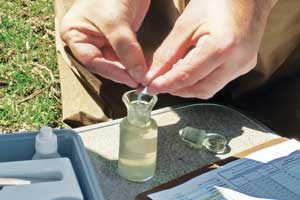
Dissolved oxygen – aquatic life depends on it
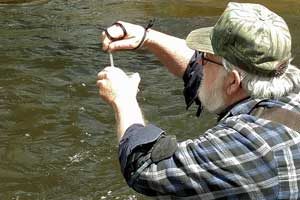
Water temperature – affects oxygen demand and can threaten creatures’ survival
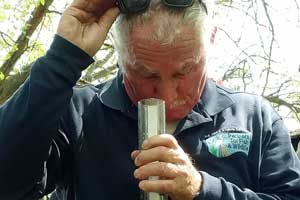
Transparency – takes into account both color and suspended particles in the water
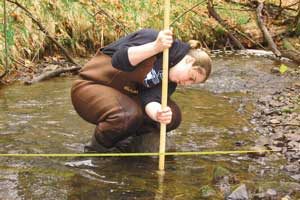
Streamflow – the amount of flowing water in a stream impacts the habitat available for creatures living in and near the stream
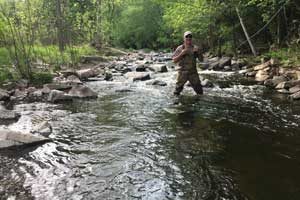
Habitat – considers streambank, bed and riparian characteristics
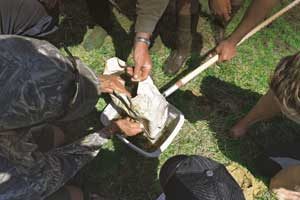
Stream macroinvertebrates – insects, worms, crustaceans, clams and other small, boneless creatures that are visible without the aid of a microscope are used to assess water quality based on their tolerance to conditions
You’ll monitor dissolved oxygen, temperature, transparency and flow once a month from May–October. You’ll also monitor macroinvertebrates each spring and fall and make a habitat assessment each summer.
Aquatic Invasive Species Monitoring
Wisconsin’s rivers are vulnerable to invasion by a number of aquatic invasive species (AIS), from Eurasian watermilfoil to Japanese knotweed. The key to successfully protecting our waters is detecting invasives early when it may still be possible to isolate or eradicate them. AIS populations that are detected early require less money and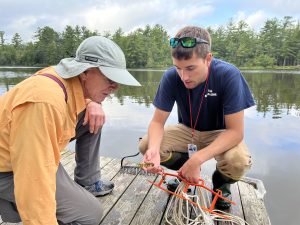 effort to manage. Volunteers like you are invaluable for early detection and rapid response. If left unchecked, AIS have the potential to reduce the diversity of native organisms, disrupt the food web, and impact recreational activities.
effort to manage. Volunteers like you are invaluable for early detection and rapid response. If left unchecked, AIS have the potential to reduce the diversity of native organisms, disrupt the food web, and impact recreational activities.
To learn more about AIS monitoring, please visit the Project Riverine Early Detectors page.
Nutrient Monitoring
Phosphorus is the most visible, widespread water pollutant in Wisconsin. High levels of phosphorus can trigger excess algae and plant growth in lakes and streams. When these excess plants die and decompose, oxygen levels drop dramatically and can lead to fish kills.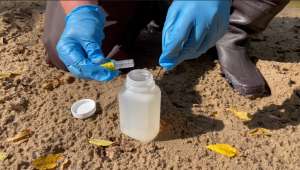
Streams act like conveyor belts, delivering phosphorus directly to lakes. Additionally, phosphorus is associated with excess sediments covering stream bottoms, the most common biological impairment in streams. Phosphorus in streams and lakes originates naturally from rocks, but its major sources today are usually associated with human activities: soil erosion, human and animal wastes, septic systems, detergents and runoff from farmland or lawns.
An analysis of phosphorus often includes both total phosphorus and soluble reactive phosphorus. Volunteers will sample for total phosphorus, which is considered a better indicator of nutrient status because its levels remain more stable than soluble reactive phosphorus. Total phosphorus includes particulate phosphorus—which is attached to bottom sediments and contained in plant and animal fragments suspended in water—and soluble phosphorus. Soluble reactive phosphorus dissolves in water and readily aids plant growth, but its concentration varies widely over short time periods as plants take it up and release it.
At times, monitoring sites will be selected for additional nutrient parameters including total suspended solids and nitrogen.
The goal of this monitoring is to characterize the total phosphorus concentrations most commonly occurring in the streams during the primary algae and aquatic plant “growing season” of May through October.
Continuous Temperature Monitoring
Continuous temperature monitoring devices, called thermistors (e.g., HOBOs or TidBits), are placed in the stream and record temperature every hour until they are removed and data are downloaded to a computer. The data collected by this project will allow researchers to:
-Document baseline water temperatures
-Document and determine the effects of thermal dishcharges on aquatic biotic
-Locate groundwater influence to streams
-Document thermal impacts of structural dams to coldwater streams
-Document changes in stream temperatures after installation of agricultural and urban best management practices
-Assess the impact of climate change
Past Projects
WAV has a rich history of volunteer monitoring dating back to 1996. Over the years, projects have been undertaken to answer research questions and gather data on specific topics of interest.
Crayfish of Wisconsin ProjectE. coli Bacteria MonitoringWisconsin Ephemeral Ponds ProjectLong-term SitesRoad SaltWastewater Treatment Plant Outfall Temperature Monitoring